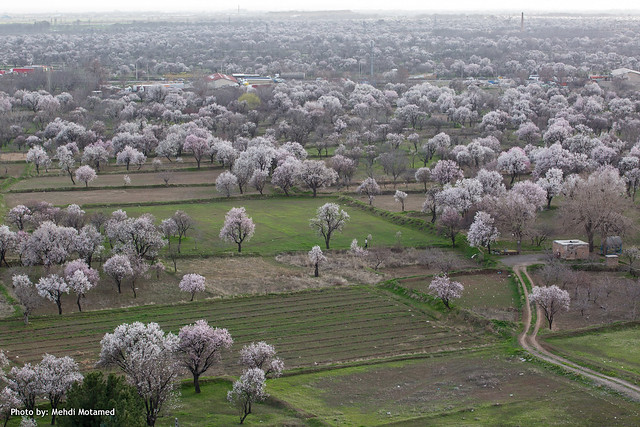Ancient Traditional Gardens of Qazvin Bāghestān, Islamic Republic of Iran
GIAHS since 2023

- ©Hamed Kolajei
Summary | Partners |
|---|
The traditional Gardens of Qazvin, called locally “Bāghestān-e Sonnatī” or simply "Bāghestān" are a flood-spreading system that dates back to thousands of years ago, when the city of Qazvin developed. Situated in the foothills of the Alborz ranges, the creation of the gardens surrounding the city has protected its inhabitants from floods adapting to and taking advantage of the watershed to produce nuts and local delicacies.
By capturing, redirecting and sharing floodwaters, local communities have been able to cultivate and grow fruit fruits all around Qazvin. Today, the system provides food and employment opportunities for people but also cools the temperature of the city and serves to replenish groundwater tables among other critical ecosystem services.
Bāghestān is a prime example of such a floodwater distribution mechanism, with a network of dykes and canals managed by effective governance to harmonize shared resources in line with stakeholders' interests. As a result, traditional management, oral culture, and established customary laws and rights have emerged. The unbounded nature of the gardens has given rise to cultural and social features that are now part of the cultural landscape of Bāghestān.


